Fountain Pen Ink Definitive Guide: Types & Properties Explained
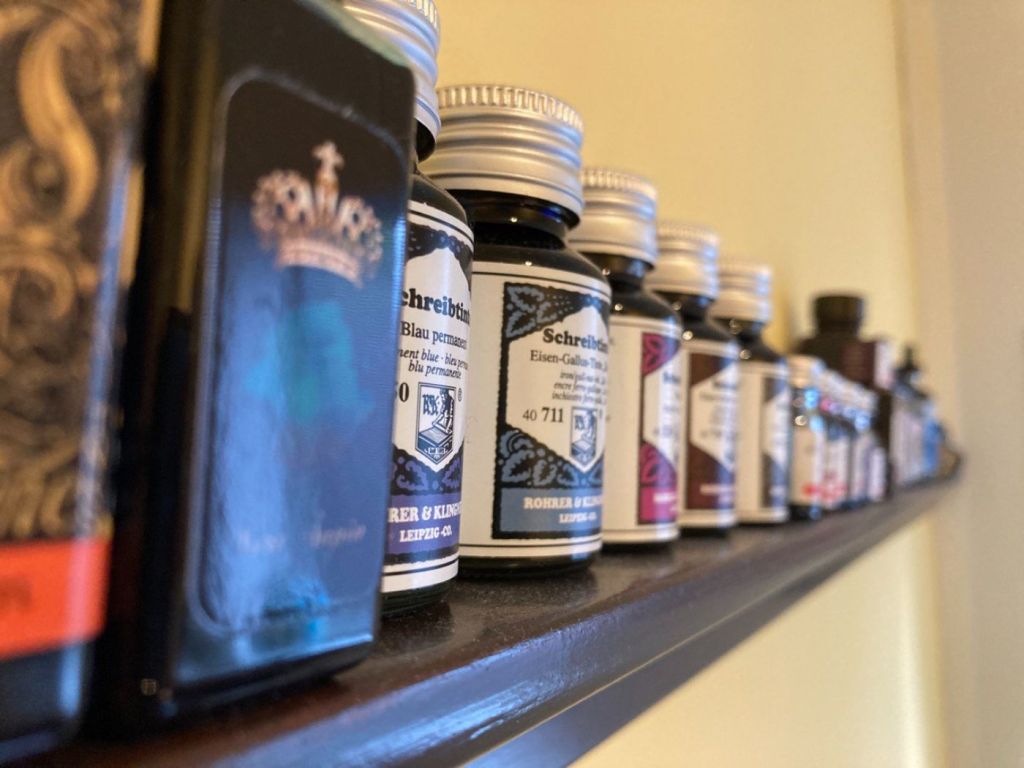
If you're new to fountain pen inks and don't have a good overview of the types of inks and their properties, and the endless possibilities, this guide is for you. It will help you comprehend all the options and make up your own mind on what ink to use.
I'll go over the absolute basics of fountain pen inks, but don't worry, it will be comprehensive. I don't want this to be a 'beginner guide' - I hate those. I'll link out to plenty of other articles that will go into quite some detail, including lots of original research I did on my own ink collection of over 60 bottles. After reading this article and any referred articles, you'll be completely up to speed on the entire range of inks and their endless possibilities.
I've divided this guide into four main sections which each will handle a specific topic. You can jump to the sections you're interested in most first if you like; you won't need to read it all or in order to get up to speed.
In this article:
Ink Types Based on Properties
In this first section, I'll discuss the general properties of different types of ink and point to articles that go into more detail or list out inks with those properties.
Ink properties to consider
How an ink behaves, how it looks, how it feels, and how it ages. Or in other words: how it behaves in the pen, while writing, on the paper, and over time.
Here are the most important properties to consider:
- saturation
- ink flow
- shading - the amount of variety in ink density
- sheen - the amount of glow or shimmer
- dry time
- waterproofness
- permanence (fade-resistance)
- maintenance requirements
All ink types based on technical properties explained.
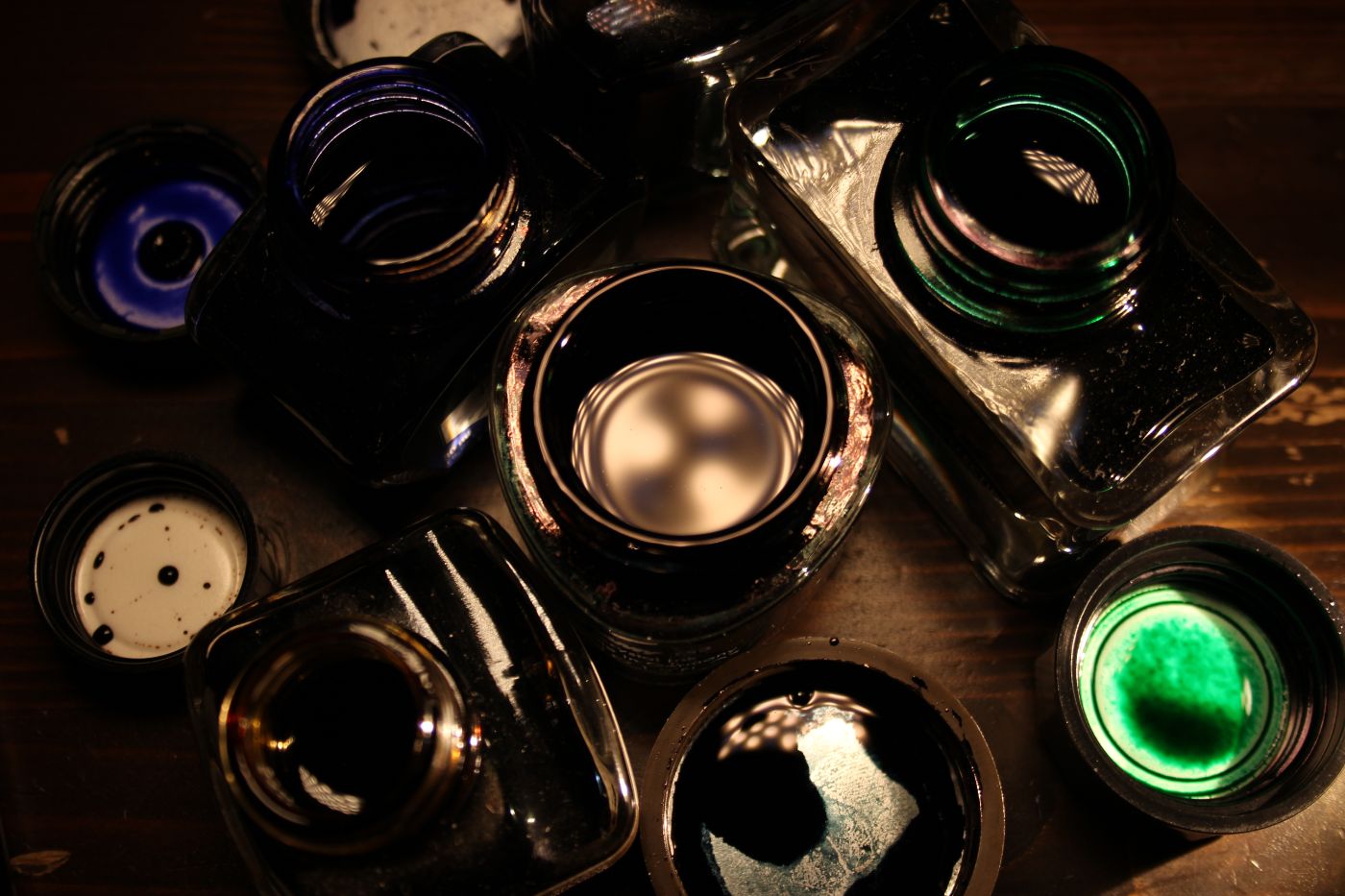
Types of ink to consider
Below, I'll go over five types of inks you could use as a general starting point for choosing your ink:
- safe inks
- lubricated inks
- non-clogging inks
- well-behaved inks
- inks for vintage pens
- permanent & waterproof inks
Safe fountain pen inks for beginners
Ie. Pelikan 4001, Waterman, Parker Quink, Sheaffer Skripp
Not all inks are created equal, and having different properties, some inks are safer for your pens than others. There is a long-standing consensus on the safety of inks made by the large pen manufacturers, like Pelikan 4001, Waterman, Parker Quink, Sheaffer Skripp, and so on. Lately, this consensus has been challenged by Nathan Tardif, creator of Noodler's ink, who claims that acidic inks will damage pen parts over time.
I've tested the acidity of all my inks (more on that later) and also observed the behavior of different inks over multiple years, and combined this with extensive online research to come up with a list of inks that should be safe for your fountain pen, based on either track record, combined properties, or pH value alone.
Lubricated ink will improve ink flow
Ie. Noodler's Polar and Eel series, Lamy Crystal inks, Aurora Black
Lubricated inks smooth out your writing experience and have a velvety feel to them. I personally use them daily since I prefer the way they write. These slicker inks will reduce the scratchiness of finer nibs, reduce feedback, improve ink flow and smoothness. Lubricated inks typically also take longer to dry, but there are some great everyday inks that perfectly balance ink flow and dry time.
There are dozens of lubricated favorites, and I have listed them here as a starting point.
With these inks, the manufacturer has added some lubricant to the ink, or you can cheaply add lubrication yourself.
Non-clogging inks reduce maintenance
Ie. Pelikan 4001, Herbin La Perle des Encres, Pilot Iroshizoku, Pelikan Edelstein
Some inks clog your pen, due to pigment particles that build up inside your pen's feed over time. All inks clog up to a certain amount, which is why you'd want to flush out your pens a couple of times per year. However, some inks are known to clog quite badly and require more maintenance than other inks, while some inks don't require a lot of maintenance at all.
Non-clogging inks are not a specific type of ink, but simply inks that have proven themselves to be particularly low-maintenance. There is no 'clogging authority' deciding which inks get their seal of approval, rather a large consensus among fountain pen users.
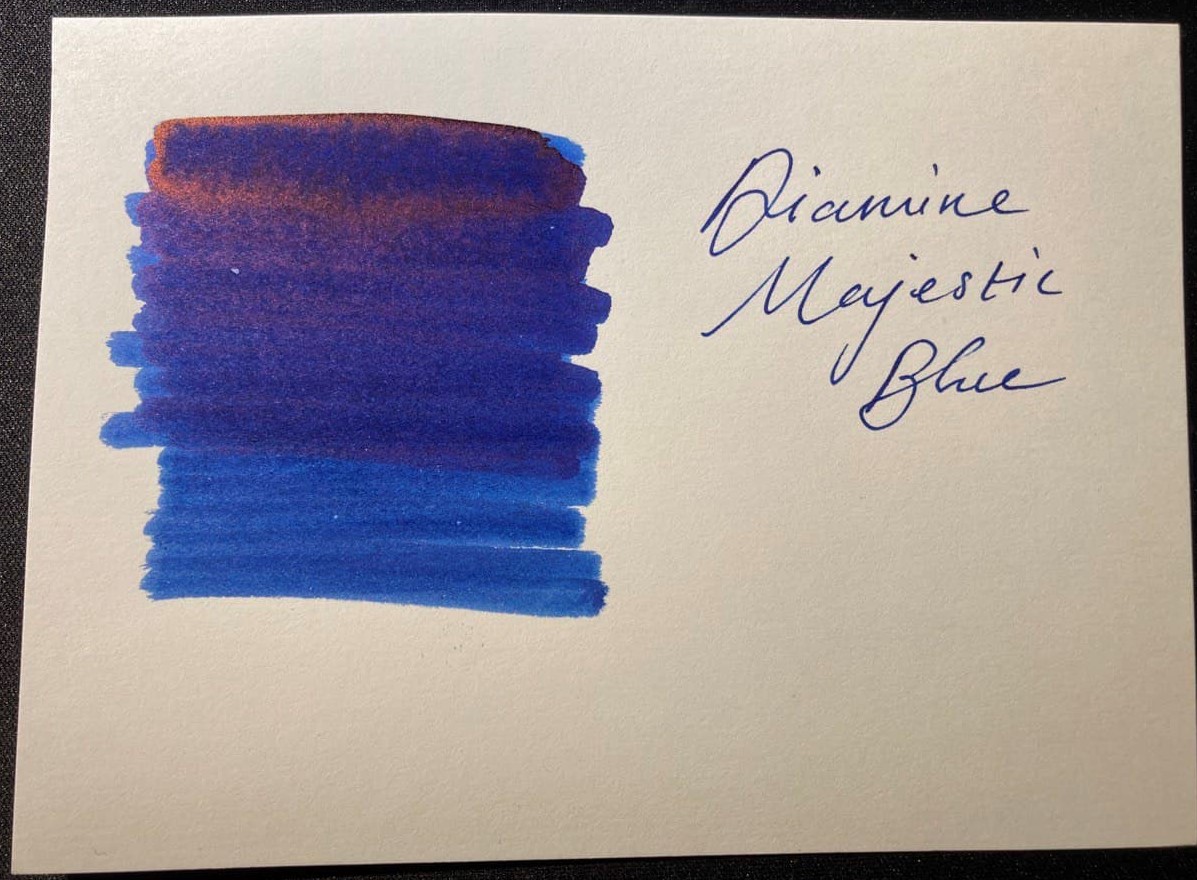
Some renowned non-clogging inks are the Pelikan 4001 and Pilot Iroshizoku-series. There are more, and some you especially want to avoid if you dislike doing maintenance. You can find a more comprehensive list of non-clogging inks here.
Using non-clogging inks will drastically reduce the required maintenance frequency of your pens, so if you don't like flushing them, I recommend taking a look at the full list.
Well-behaved inks are more enjoyable
Ie. Diamine, Herbin La Perle des Encres, Edelstein
Generally, there is some overlap between what people call best-behaved inks, and non-clogging and lubricated inks. 'Well-behaved' generally refers to behaving well in the pen (safe and low maintenance), behaving well while writing (ink flow), and behaving well on the paper (permanence and waterproofness). You could say that these inks inhabit the center of a Fenn diagram of all of the above inks.
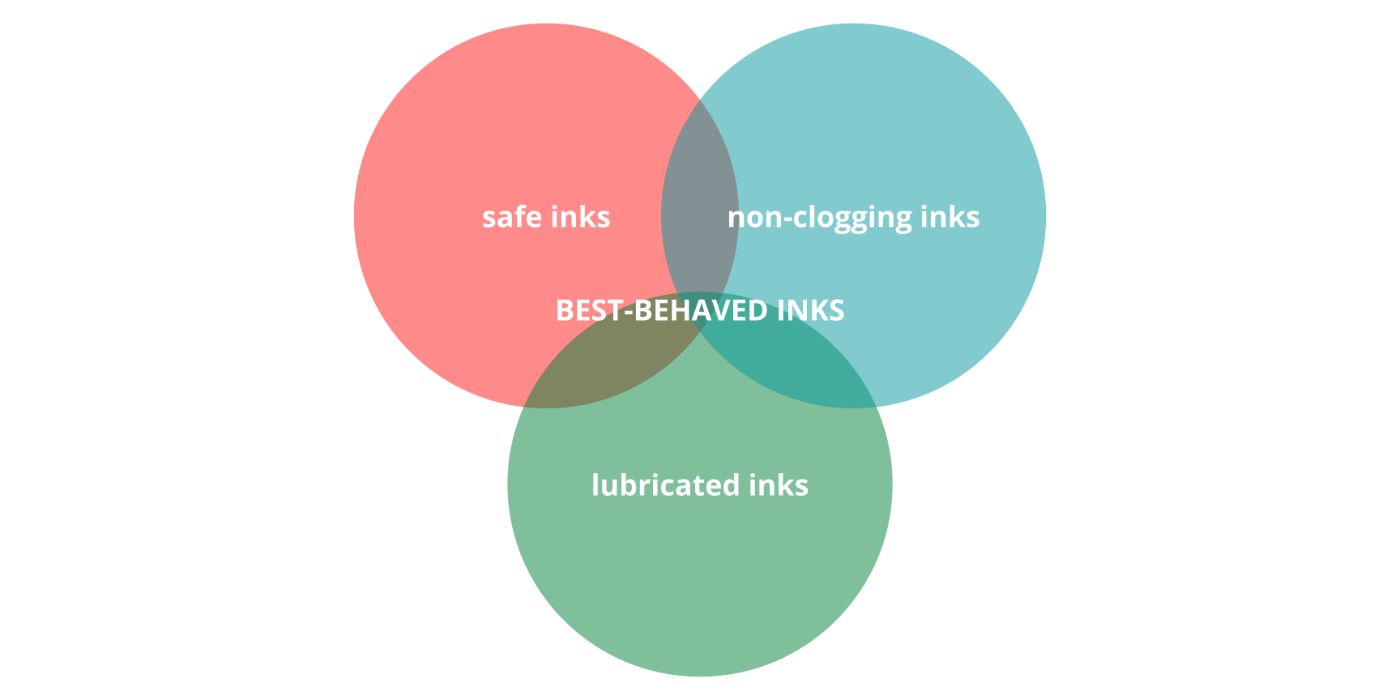
I've compiled a list of what people generally describe as best-behaved inks, combined with my personal observations. Sure, the classic inks are on there, but there is an entire category of more interesting inks that behave even better.
Inks for use in vintage fountain pens
Vintage pen use other materials than modern pens and are sometimes more fragile due to their age. Because of this, not all inks will work as well in old pens. Luckily, there has been a long track record of people documenting their experiences with different types of inks, and sometimes ruining their pens in the process, so you won't have to.
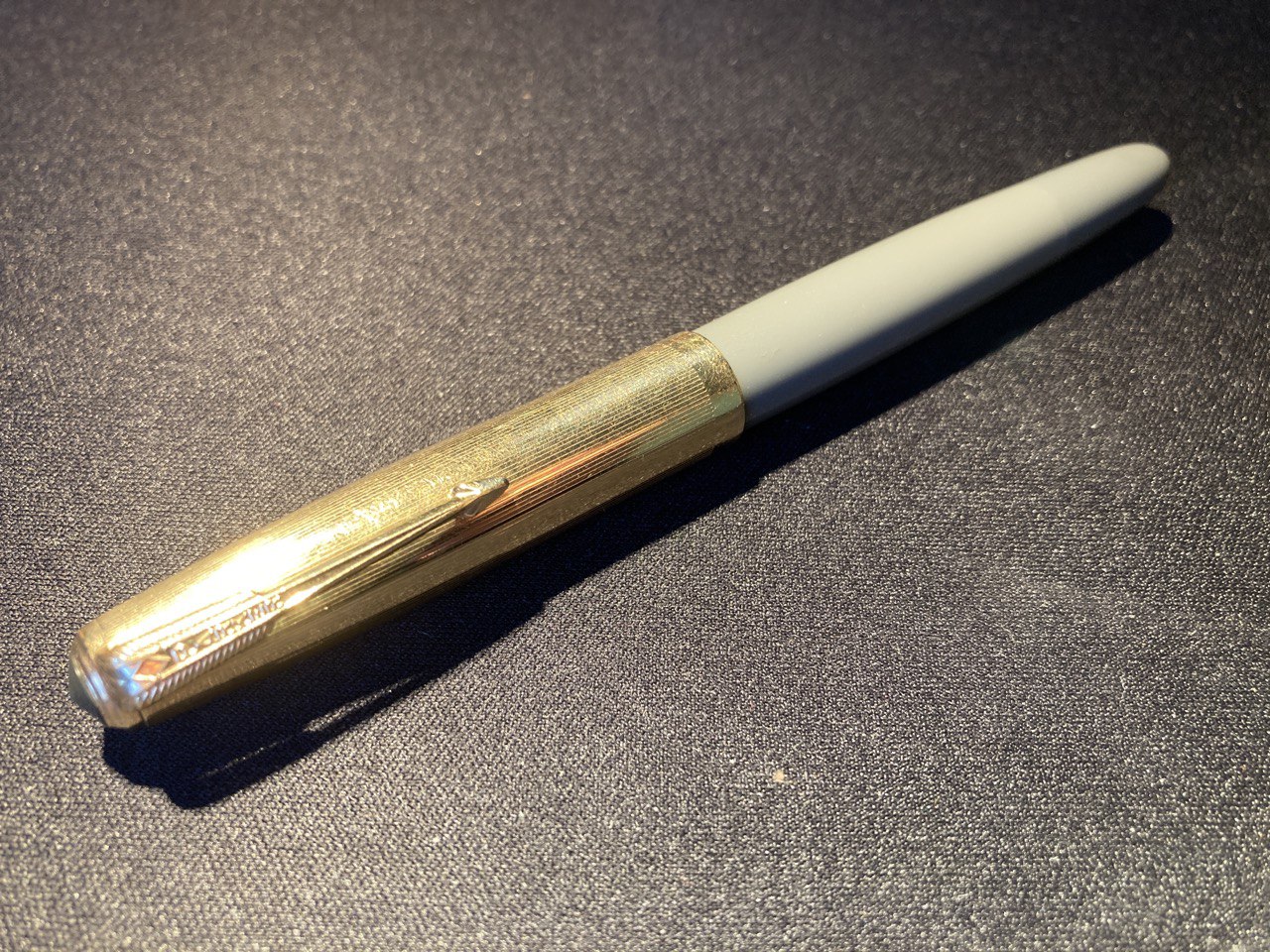
The rule of thumb is to use inks from the old-time pen manufacturers and avoid boutique inks or obscure manufacturers. Waterman ink is one of the easiest out there, and Pelikan 4001 is also a good range of easy inks. Something you might not know is that blue is the preferred color, since blue takes the least amount of dye to create. Red requires the most, and will (theoretically) more easily clog up the inner works of your pen.
Permanent & waterproof inks
There are different types of permanent inks, which will either have one or more of the following properties:
- waterproof
- permanence
- UV resistance
- fraud resistance
- archival quality
Permanence is simply how fade-resistant an ink will be over time. UV resistance is similar (or perhaps the same altogether), and tells you the ink will hold up in the sun without fading. Fraud resistance means that the ink will not respond to typical chemicals or treatments used by fraudsters, like bleach. Archival quality means the ink is at least permanent and will not fade over time, although it will sometimes also share some of these other properties.
Here are the best archival inks I've tested and used over the years.
Storage & Shelf Life
In this section, we'll briefly touch on the shelf life of fountain pen inks and how to increase or reduce the shelf life by the way you store yours.
Fountain pen ink has a long shelf life
Many beginning enthusiasts -myself included- start buying dozens of ink bottles once they realize the full potential of fountain pen ink. Perhaps you're one of us. After the initial splurge, you might start wondering whether you'll be able to use all that ink before it goes bad. You might have collected yourself a lifetime supply already!
The good news is: yes, you will have dozens of years to use up your inks. Fountain pen ink will last dozens of years if properly stored. Unopened bottles will last up to 60 years or more, based on anecdotal evidence. The bad news: you'll probably continue to feel the urge to buy more.
In the article above, I'll go over how to ensure your ink will go bad, and also which inks are known to last a long time, and which ones aren't.
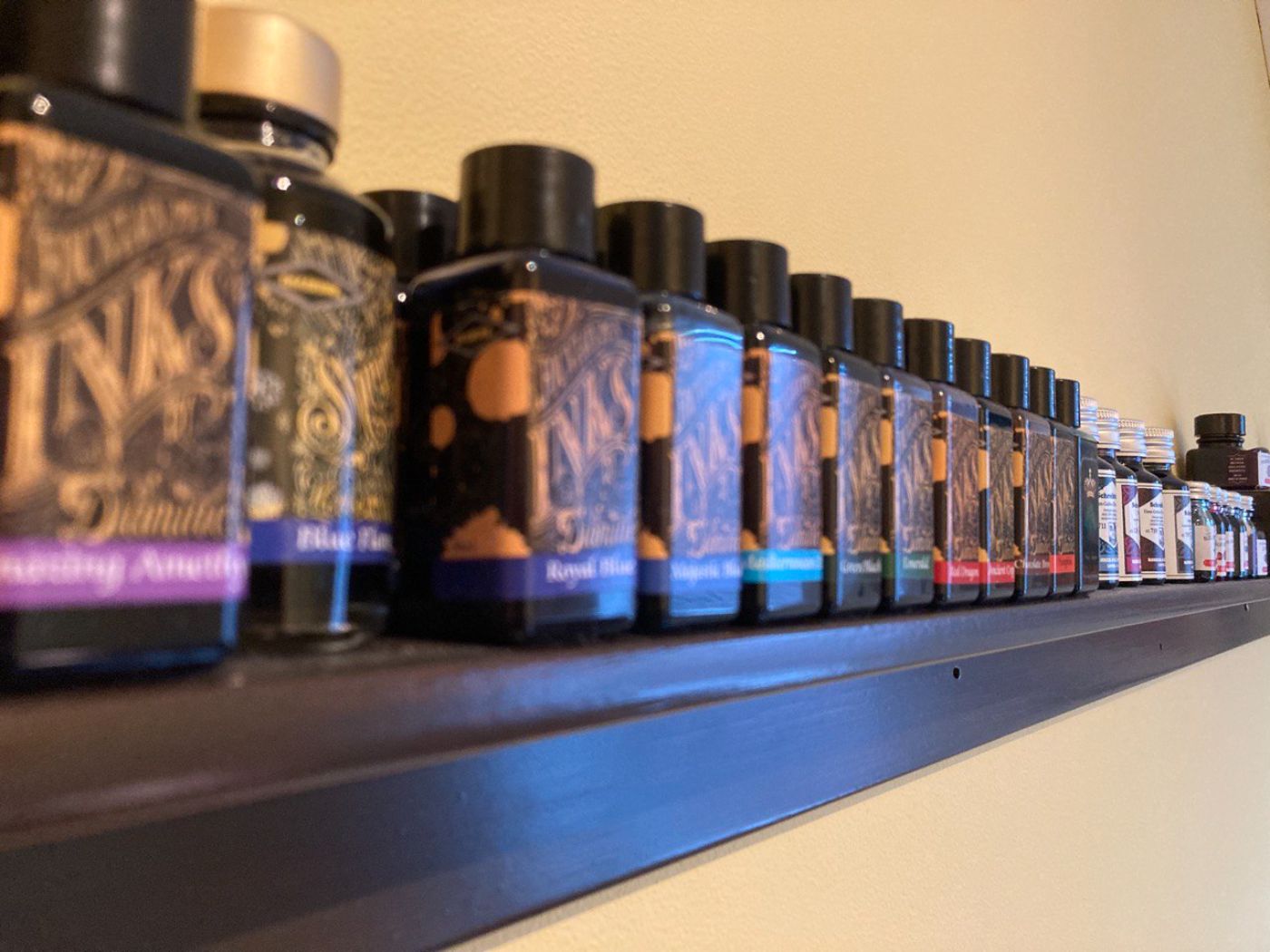
You can store your ink any way you like
Properly storing your ink can be a compromise as well. Ideally, you store your bottles in their original boxes, in airtight containers, stacked away somewhere in a drawer. But most of us want to be able to glance over our inks and have them at the ready - not in the least because we're proud of our collection. It's not ideal, and it will reduce shelf life.
To increase the shelf life of your ink, prevent air and light from getting to your ink, and store at stable room temperature. Cool and dark is best.
To reduce the shelf life of your ink, allow the ink to evaporate in the afternoon sun, letting it warm and cool dramatically every day. Ideally, you'll also contaminate your bottles using your grimey pens directly in the bottle. The good news: even if you do everything wrong, you'll still get plenty of use out of your bottles.
So what if you want to pass on your inks to your grandchildren? I have created an Inter-Generational Ink Storage Solution (just made that up) for die-hard collectors. You can learn how to set up your Inter-Generational Ink Storage here.
Main Ingredients of Ink
In this section, I want to briefly touch on the main ingredients of fountain pen ink. We'll use this knowledge in the next section to adulterate our inks ourselves.
What is fountain pen ink made of?
Most contemporary fountain pen inks are made of water, biocides (antibacterial agent), dyes (or with permanent inks, very fine pigments), surfactants, humectants, pH modifiers, and anti-foaming agents.
The most common dyes used are:
- red dye: eosin
- blue dye: triarylmethane
- black inks: both
Surfactants reduce the surface tension of the ink, improving ink flow; humectants prevent the ink from drying out. pH modifiers help to reduce the ink's corrosiveness.
More traditional iron gall ink was made from iron salts and tannic acid from vegetable sources and was often homemade.
Ink acidity determines corrosiveness
As I've mentioned above, ink acidity plays a part in pen corrosion over time. Since there wasn't an extensive database of ink pH values available on the internet, I've decided to make one myself. I started testing my own inks. I bought a simple pH meter and recorded the values of my own ink collection, using double tests and cross-referencing internet resources to check for accuracy.
This isn't a scientific resource by any means, but it will give you a good indication of the acidity of dozens of inks, which may help you decide what inks to use in different pens and for different purposes. I'm very proud of this resource and hope to add to it over time.
Go to my fountain pen ink acidity database here to check the acidity of your favorite inks.
If you're simply interested in getting an overview of pH-neutral inks as a starting point, I recommend reading my article on pH-neutral inks instead.
Fountain pen ink generally isn't toxic
Most fountain pen inks could be considered an irritant, but not truly poisonous, even if ingested in medium amounts. There are plenty of reports of people ingesting ink, chewing on cartridges, and so on, and not one case of ink poisoning has been reported. This is also because ink manufacturers have to take this behavior into account and have been discontinuing inks that could potentially be toxic for a long time, with Parker SuperChrome being a well-known example. However, I wouldn't recommend drinking even small amounts of fountain pen ink.
"The ink from pens and markers is considered minimally toxic and it’s difficult to be exposed to large quantities of it. Thus, the likelihood that you’ll get ink poisoning by ingesting ink from a pen or getting some on your skin or in your eye is slight."
Fountain pen ink isn't toxic to the environment
Most modern-day fountain pen inks are not toxic to the environment at all. They are made with natural dyes and ingredients, and are specifically designed to be non-toxic to humans and therefore other life forms.
You could argue that packaging and shipping ink bottles is bad for the environment. However, ink is generally shipped in glass, which is recyclable, and in large quantities (1oz and up), lasting from 1-20 years, making fountain pen ink a lot more environmentally friendly than throwaway ballpoint pens on a per word basis.
Tinkering with your Inks
In this section, I want to discuss how you can use your knowledge of inks to tinker with your own collection, customizing your favorite inks to your own taste, or even mixing your own inks.
Lubricating your own inks is easy
Dry inks can be lubricated quickly and cheaply by adding a small drop of surfactant or lubricant to your bottle. Glycerin is widely used, and several surfactants as well (which reduces surface tension), sometimes in combination. It's great fun, but you can also ruin ink if you're too generous. You could even use dishwasher detergent, but I wouldn't recommend it.
Lubricating your ink will improve ink flow, and make for a smoother writing experience. I like smoother writing best, like drawing with maple syrup. It will reduce the scratchiness of low-quality or finer nibs and provide wetter writing.
Learn how to lubricate any ink yourself without ruining it here.
You can dilute your inks with water
If you want to improve shading and dry time of your ink, you might add water to it. This seems counter-intuitive, because it is. But adding water will actually make your ink feel drier, not wetter, since you dilute the ink, increasing the surface tension and decreasing lubricity.
Did you find the answer to your specific question?
👍 8 👎 0
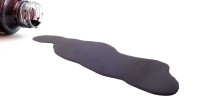
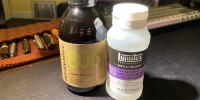
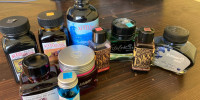
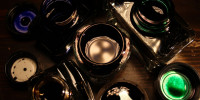
Leave a comment